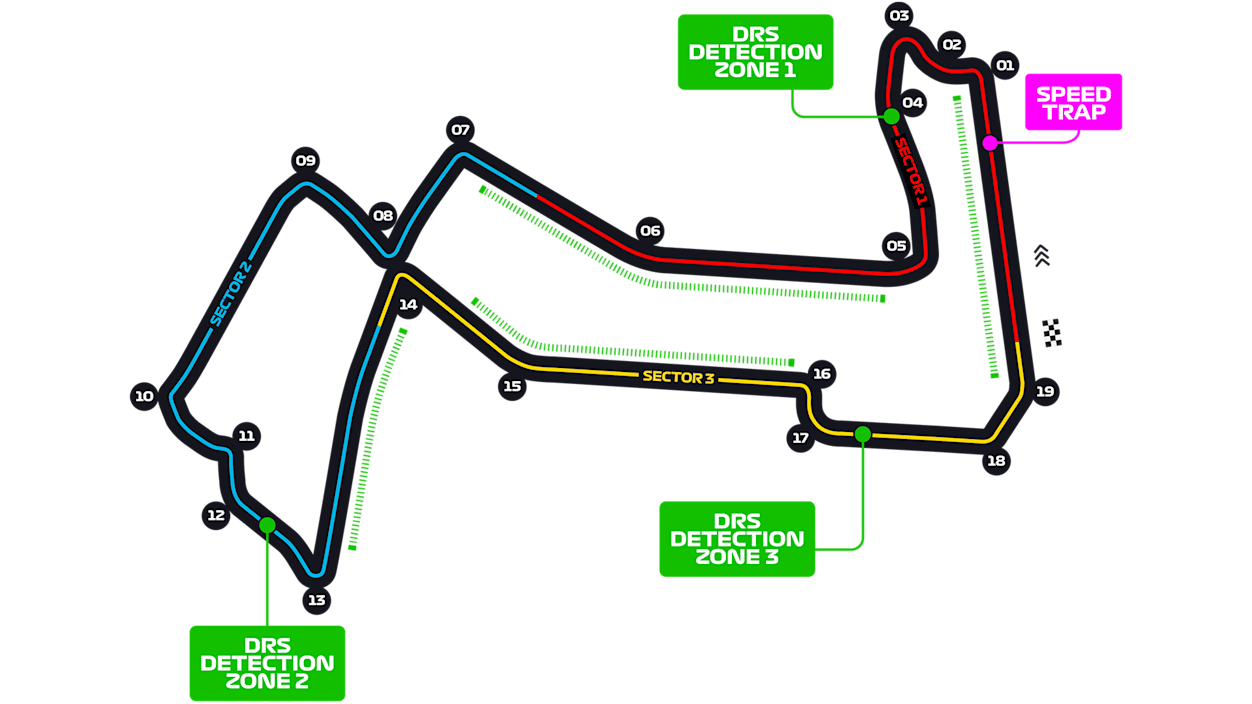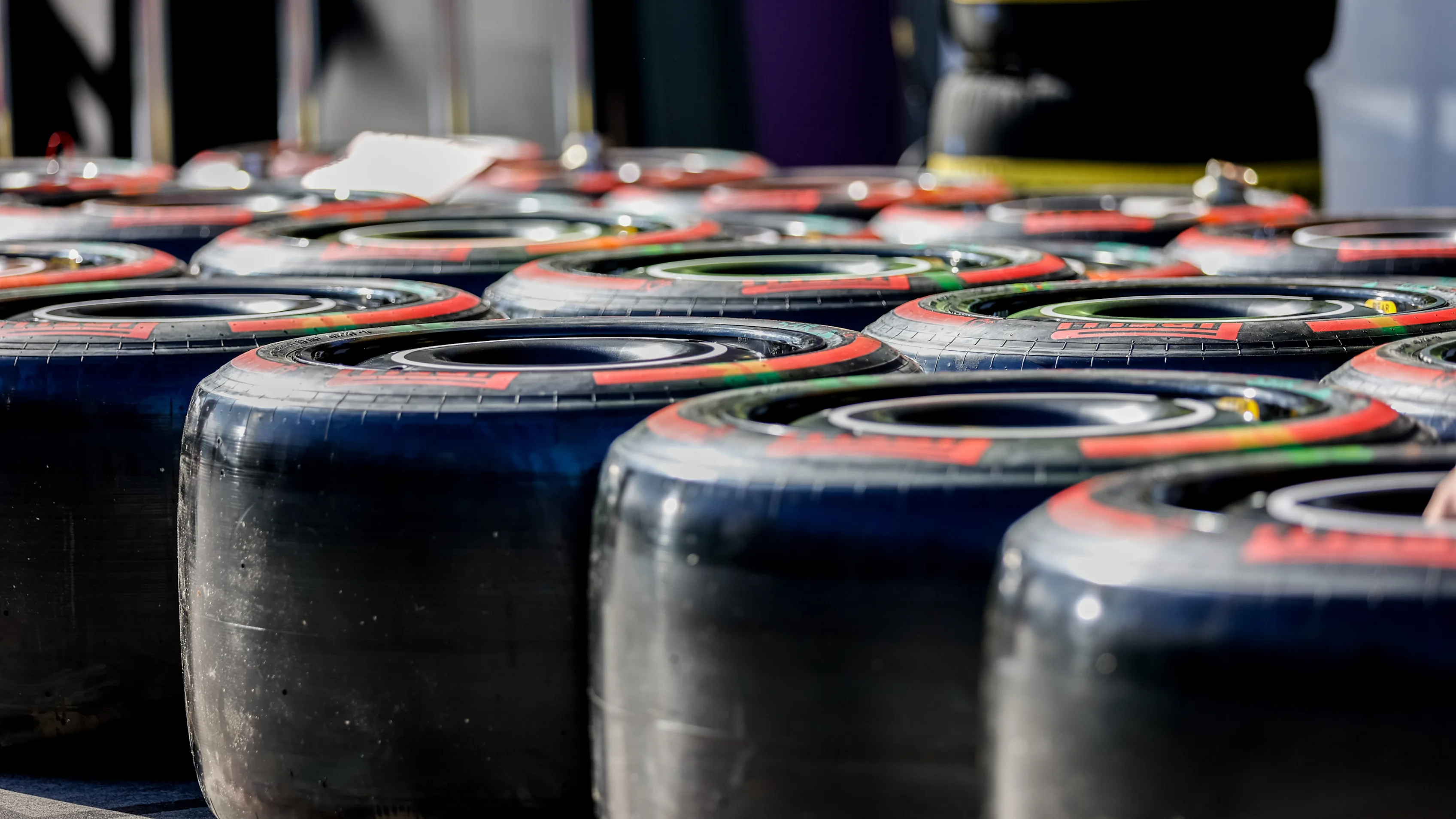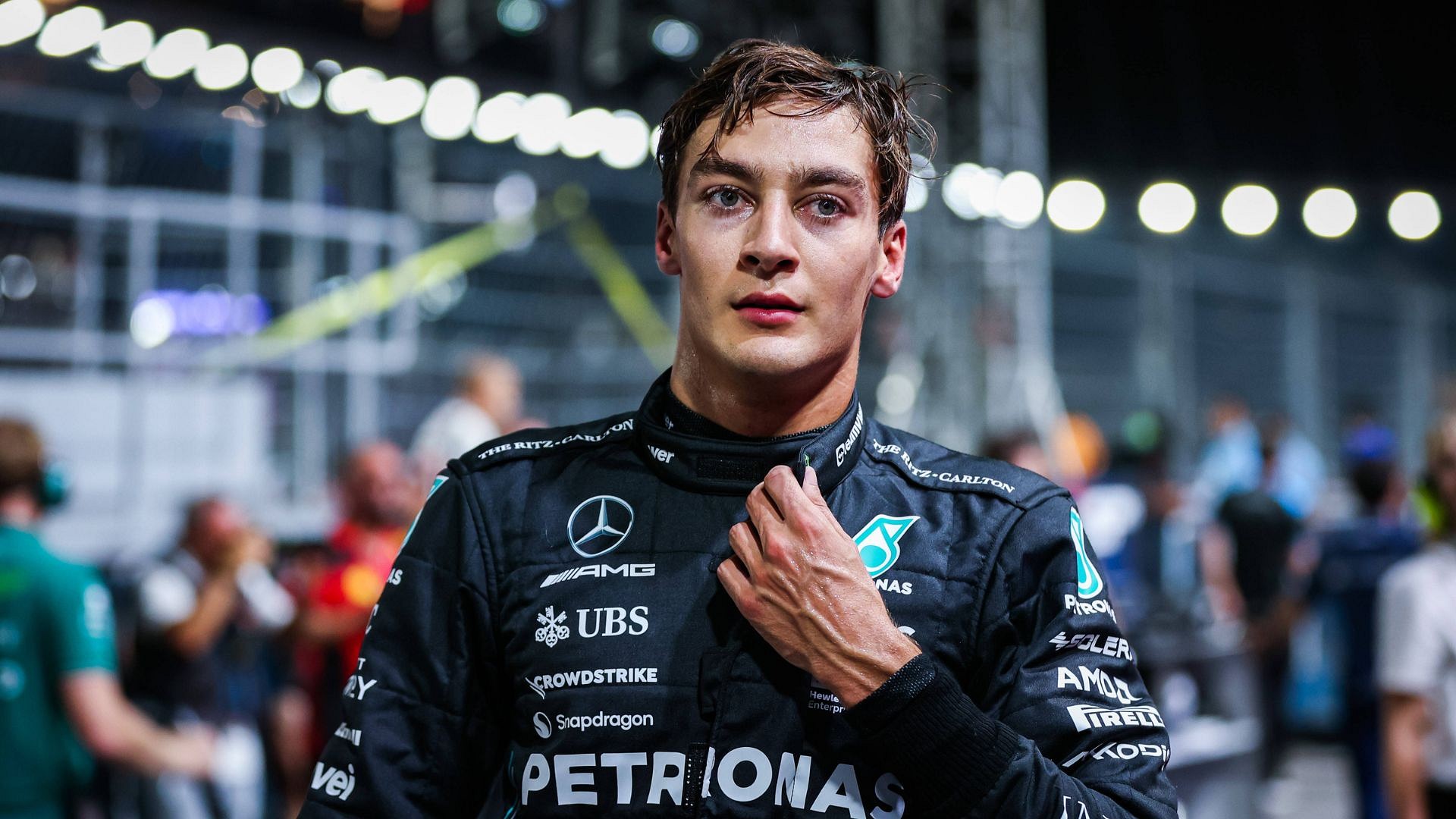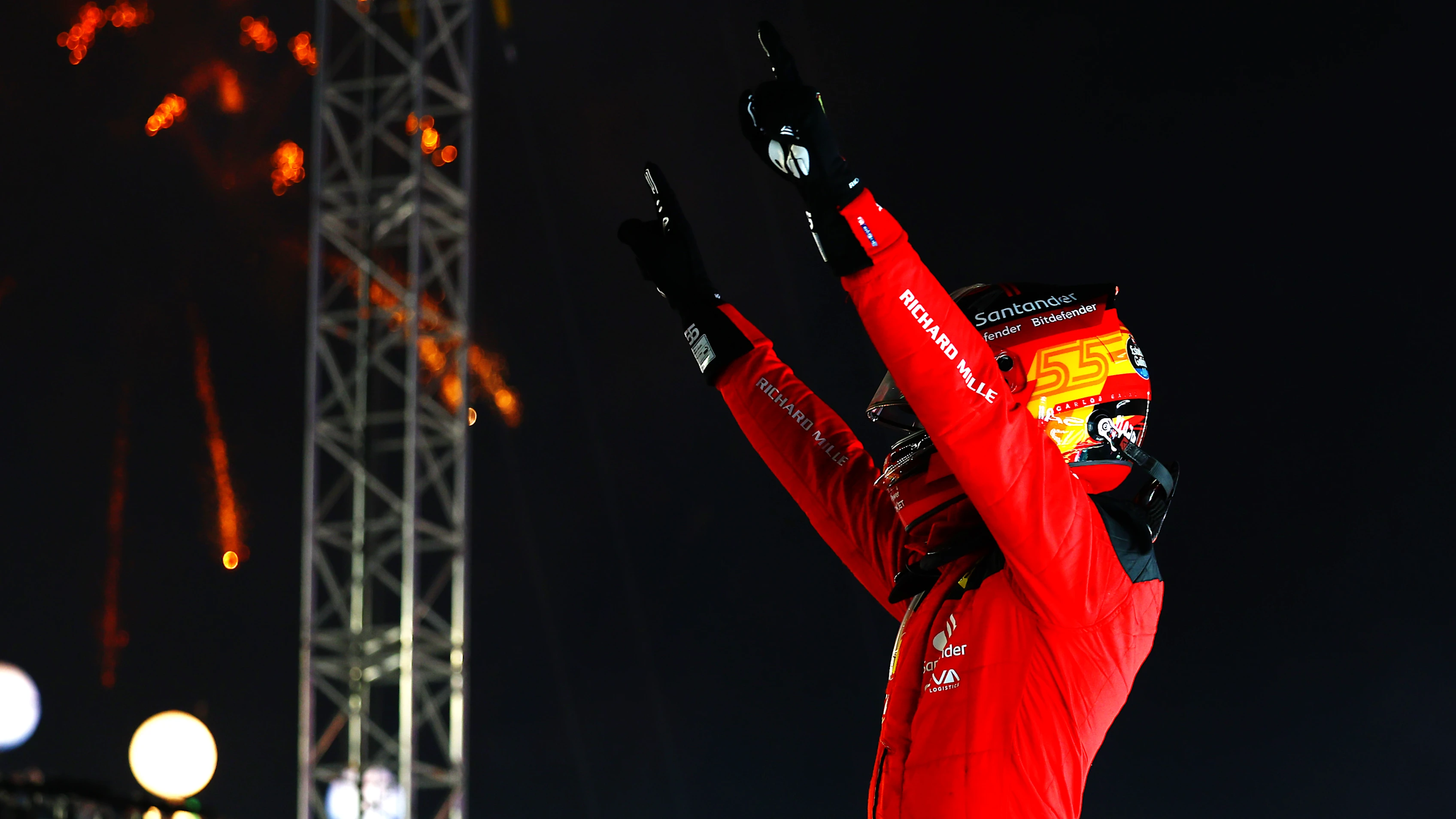
2025 Singapore Grand Prix: all you need to know
The Singapore Grand Prix, held at the Marina Bay Street Circuit, is one of Formula 1's most iconic events. It debuted in 2008 as the sport's first-ever night race , and over the years it has become a fan-favorite fixture on the F1 calendar. This street circuit winds through downtown Singapore's glittering skyline, offering a visually spectacular backdrop for racing under floodlights. But it's not just about looks -- the combination of tight corners, close walls, and tropical climate makes Singapore one of the most challenging and unpredictable races of the year. Drivers contend with extreme heat and humidity, bumpy streets, and zero margin for error, making this Grand Prix a true test of endurance and skill.

Key corners
Marina Bay's layout packs 19 corners into 4.94 km of track , so precision is key. Here are some of the most critical turns on the circuit:
-
Turn 1 (Sheares Corner): The opening right-hander is named after a former Singaporean president and sets the tone for the lap. At the race start, all cars funnel into this corner immediately off the grid -- a recipe for early drama if anyone misjudges their braking. A clean getaway through Sheares is crucial for holding position into the tight Turns 2 and 3 that follow.
-
Turn 7 (Memorial Corner/Stamford): At the end of the track's longest straight (Raffles Boulevard), Turn 7 is a 90-degree left-hander and the prime overtaking spot on the circuit. Drivers roar down the DRS-assisted straight and slam on the brakes here, often attempting daring passes. The corner's ample runoff area gives some room for late brakers to dive inside, making it a frequent scene of wheel-to-wheel action.
-
Turn 10 ("Singapore Sling"): Formerly a notorious triple-chicane, the Singapore Sling (Turn 10) was re-profiled into a quick left-hander in 2013 -- but it remains one of the trickiest parts of the lap. A precision line is needed to hop the kerb and carry speed. A good exit here sets drivers up for the upcoming high-speed section and is essential for any overtaking attempt into the next heavy braking zone.

-
Turn 13 (Anderson Bridge Hairpin): After threading the narrow Anderson Bridge (just one car wide), drivers encounter a tight hairpin at Turn 13. This corner requires peak braking performance as the cars slow dramatically while still on bumpy public roads. It's a photogenic spot -- cars tiptoe around the hairpin next to the historic bridge -- but also an opportunity for savvy drivers to out-brake a rival who struggles for grip on the slippery surface.
-
Turn 14 (Esplanade Drive): A sharp right-hander at the end of another DRS zone, Turn 14 is a classic late-braking overtaking point. Coming after a curved acceleration zone along the waterfront, this corner has seen plenty of bold passes and the occasional collision. Fans at the nearby Connaught grandstand often witness decisive moves here, as drivers jostle for position before entering the final sector of the lap.
Each of these corners plays a role in defining a strong lap in Singapore. Mastering them -- from the fast commitment of Turn 7 to the stop-go finesse of Turn 13 -- is key to a competitive performance under the lights of Marina Bay.

Overtaking opportunities
Overtaking at the Marina Bay circuit is notoriously challenging -- the track is tight, twisty, and surrounded by barriers, leaving few clear passing spots. To help encourage more action, Formula 1 has added multiple DRS zones (four as of the 2024 race) on this circuit. Even so, drivers must pick their moments carefully. The best chance to make a move is under braking into Turn 7 at the end of Raffles Boulevard, where a long straight and heavy braking zone create a prime opportunity for a lunge up the inside. Another key overtaking zone is the approach to Turn 14 -- the tight right-hander preceded by a DRS straight -- which often invites late-braking duels and side-by-side exits.
Elsewhere, opportunities are limited. Turns 1--3 on the opening lap can see position changes as the field sorts itself out, and a brave driver might try a surprise pass into a slower corner like Turn 13 if the car ahead slips up. However, offline parts of the street circuit can be dusty and bumpy, punishing cars that stray from the racing line. In short, pulling off a clean overtake in Singapore requires precision and patience. It's no surprise that Marina Bay is a circuit where track position (and thus qualifying well) is especially vital.

Tyre selection and strategy
Tyre strategy in Singapore tends to follow a conservative approach due to the circuit's unique demands. Pirelli usually brings the softest available tyre compounds to Marina Bay, maximizing mechanical grip on this low-speed, high-downforce track. Despite the heat and constant cornering, the asphalt is not particularly abrasive, so a one-stop strategy is often feasible and statistically the fastest approach. Teams prefer to minimize time spent in the pit lane because a pit stop here incurs a huge time loss -- around 27 seconds -- thanks to a long pit lane and a low 60 km/h speed limit. Such a penalty for pitting is the highest on the F1 calendar, so making an extra stop can be very costly if it drops a driver into traffic.

However, strategy can quickly be upended by Marina Bay's tendency to produce Safety Car periods. A well-timed Safety Car can cut the effective pit-stop loss roughly in half (to about 16 seconds) , offering teams a "cheap" stop to change tyres. In fact, since 2014, every Singapore GP saw at least one Safety Car or Virtual Safety Car -- until 2024, which remarkably ran without any yellow flags at all. Because Safety Cars are so common, strategists in Singapore stay flexible. They may plan a one-stop on paper, but if an early caution comes out, we often see teams switch things up -- for instance, grabbing an early tyre change under yellow and then trying to nurse those tyres home. Managing tyre temperatures is another critical factor in the hot, stop-start conditions, so expect engineers to keep a close eye on brake and tyre cooling throughout the event.
Weather outlook and its impact
Singapore's equatorial climate always looms large over the Grand Prix weekend. Even though the race is held at night, conditions remain hot and humid. Typical daily highs around early October hover around 30°C, with humidity often in the 70-80% range. In the dense city environment, heat lingers into the evening, so drivers and cars still face sweltering conditions during the race. Cockpit temperatures can reach about 60°C despite the night schedule , meaning drivers are essentially sitting in a sauna on wheels. It's no wonder they can lose up to 3 kg of body weight through sweat by race end. These extreme conditions test the athletes' fitness and concentration to the limit -- fatigue can easily lead to mistakes on a track where errors are rarely forgiven by the walls.

There's also the ever-present threat of tropical rain. Singapore's location means sudden thunderstorms are possible even in the evenings. While one cannot predict the exact weather for the 2025 race this far out, historically we've seen everything from brief drizzle to intense downpours during the Grand Prix. Rain isn't uncommon at this event , and even a short cloudburst can dramatically alter the track surface. A wet Marina Bay circuit is incredibly challenging -- painted street lines turn slippery and puddles can linger in the low-lying areas. When the skies have opened in past races, chaos often ensued (for example, multi-car crashes at the start of a wet 2017 race). Teams will be monitoring the radar constantly, as a well-timed switch to wet-weather tyres or a strategy gambit under a rain-induced Safety Car can decide the race. Even if the skies stay dry, the high humidity can affect engine and brake cooling. In summary, weather is a major wildcard in Singapore, and its impact can range from subtle (making tyre management tricky) to race-transforming (prompting safety cars and strategy shake-ups).
Historical records and statistics
Though the 2025 Singapore Grand Prix is a preview (the race has yet to happen), the venue comes with a rich history since its 2008 inception. The inaugural night race in 2008 saw Fernando Alonso take a controversial victory for Renault , marking the beginning of Singapore's dramatic storylines. Since then, many of F1's greats have conquered Marina Bay. Sebastian Vettel remains the king of Singapore with a record five wins to his name , achieved with a combination of Red Bull and Ferrari machinery. Lewis Hamilton is next, with four victories here , often showcasing masterful skill on the tight track. Those two are the only repeat winners in Singapore aside from Alonso (who has won twice) -- a testament to how challenging it is to consistently triumph on this circuit. On the constructors' side, no single team has dominated every year; Ferrari, Mercedes, and Red Bull each have four Singapore GP wins in the record books , while McLaren and Renault have one apiece. This three-way tie among the top teams underlines the event's competitive balance over the years.

Recent editions have been particularly unpredictable. In fact, the last five Singapore Grands Prix had five different winners -- namely Hamilton, Vettel, Sergio Perez, Carlos Sainz and Lando Norris (from 2018 through 2024). McLaren's Lando Norris took the 2024 victory, which impressively was the first-ever Singapore GP to run without a Safety Car intervention (breaking a long streak of caution-filled races). Singapore often produces interesting trivia: the smallest winning margin here was a mere 0.239 seconds in 2010 (Alonso narrowly beating Vettel), while the largest was 32.627 seconds in 2013 (Vettel comfortably ahead of Alonso). The lap record was also reset recently due to the track layout change -- with the course shortened in 2023, lap times dropped significantly. In 2024, a lap in the low 1 minute 30-something range became the new benchmark (compared to ~1:45s on the old layout). All these stats highlight that Singapore is a race of extremes: extremely tight gaps on some days and big spreads on others, but never short on excitement.

Conclusion
With its unique night-time atmosphere, unforgiving street layout, and mix of strategic variables, the Singapore Grand Prix is poised to be a highlight of the 2025 F1 season. This preview has covered the essential points -- from the circuit's key corners and overtaking hotspots, to the tyre and strategy considerations, the weather wildcard, and the historical precedents that set the stage. F1 fans can look forward to a spectacle under the lights of Marina Bay, where every mistake is magnified and every decision carries extra weight. The 2025 Singapore GP will challenge the drivers physically and mentally, and if history is any guide, it could deliver surprise twists that shake up the championship. So buckle up for a weekend of high-octane drama in the Lion City -- under the humid night sky, Formula 1's stars will battle not just each other, but also the circuit itself in a race truly like no other.
